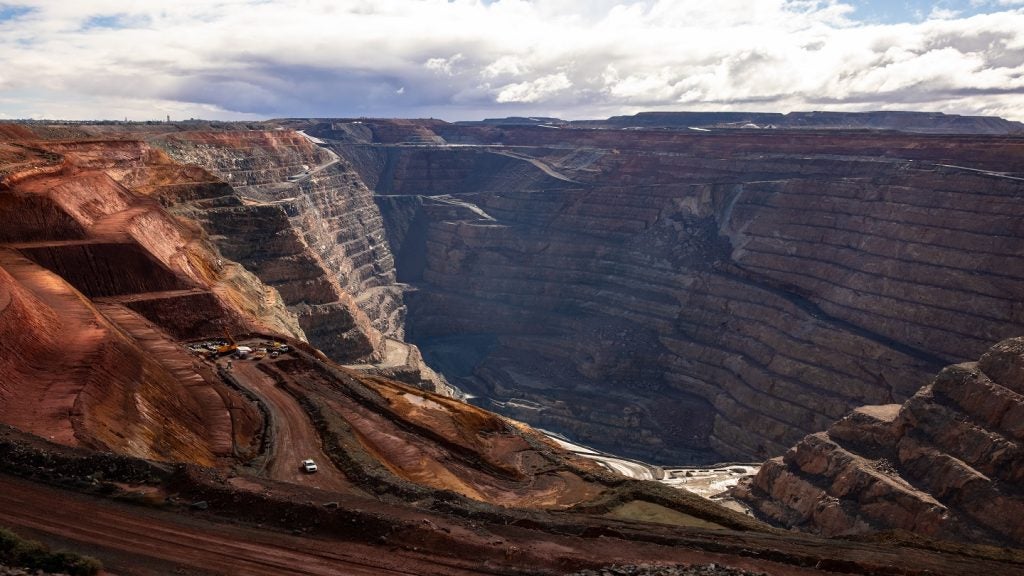

The price of gold got off to a running start this year, rising by 17% in the first quarter and outperforming other commodities by 14%. The positive performance of this precious metal has sparked speculation on whether the rate will continue to rise, plateau, or drop, and what this will mean for a mining sector plagued by the low price of commodities.
It's been a troubled journey for the yellow metal since the highs of $1,900 an ounce in 2011, when managed money investors and private individuals flocked to the traditional safe haven of gold in otherwise turbulent times for the financial sector. The good times weren't to last; as stock markets began to rally in 2013, the price of gold began to tumble, prompting Jeffery Currie, the head of commodities research at Goldman Sachs to predict gold would sink to beneath $1,000 in 2016.
These woeful predictions have so far been disproved. Starting from a low of $1,060 on 1 January the price has gone from strength to strength, reaching $1,254 on 10 April. This is compared with the prices of other commodities continuing to fall.
Why is gold performing better than other commodities?
Gold has always been an entirely different commodity to any other due its broader and more diverse set of demand drivers. "That means that its response to market conditions is different from other commodities," says John Mulligan, the World Gold Council's head of member and market relations. "It isn't anywhere near as tied to the industrial cycle or to prevailing economic conditions and responses."
The nature of the demand for gold is what gives it its appeal as a diversifier of investment portfolios and safe haven for individuals. In many areas of the world, gold's value lies within its social properties. In China and India, the two biggest consumers of the metal, wealth transfer via gold is a part of the culture, used to seal marriages and celebrate occasions. Mulligan explains "55% of gold demand last year came from India and China. If we add in South East Asia, we're talking about two thirds."
How well do you really know your competitors?
Access the most comprehensive Company Profiles on the market, powered by GlobalData. Save hours of research. Gain competitive edge.

Thank you!
Your download email will arrive shortly
Not ready to buy yet? Download a free sample
We are confident about the unique quality of our Company Profiles. However, we want you to make the most beneficial decision for your business, so we offer a free sample that you can download by submitting the below form
By GlobalDataIt is this set of consumers that has kept the sale of gold going through the era of low prices. "Jewellery consumers, who have really led gold demand over the last three or four years, would rather buy at a lower price," says Adrian Ash, head of research at Bullionvault.com. "We have seen that with the gold crash of 2013 when gold dropped 25% in three months." It was at this time that Chinese and Indian demand grew exponentially.
"A lot of commentators were scratching their heads and asking how Chinese demand could be so strong yet the price be going down," says Ash. "They were putting the cart before the horse. The reason Chinese demand was so strong is because the price was going down."
The other major players in demand for gold are self-directed private investors and managed investment funds that use gold as a reserve asset in a way that other commodities aren't used. They are moving back to gold in a large way; Bullionvault.com saw a 60% rise in individual memberships compared with the same period last year. Not only this, but it has seen "a very strong rise" in people selling, according to Ash.
The same can be said of managed money funds. The Exchange Traded Funds (ETF) market, one of the vehicles used by managed money to buy gold, has purchased 363t of gold this year to date, more than twice the amount ETF sold in the last two years combined.
John Mulligan attributes the recent rush to buy gold by managed money and the subsequent rise in price to an escalating risk landscape, contributed to by negative interest rate policies imposed by central banks. Negative interest rates have affected traditionally safe, steady yielding parts of portfolios such as sovereign government bonds.
"Suddenly we see that 30% of all of the world's government debt is negative, meaning actually you are eroding the amount of money you have invested," says Mulligan. "Another 40% is near zero. So 70% of the world's assets are not performing in the same way as you expected." This is driving investors to gold as a stable asset to invest in.
Ash argues that this landscape has been further disrupted by the Federal Reserve System, the US' central bank "painting itself into a corner" by creating uncertainty over whether or not it would raise interest rates. This indecision has paved the way for a rush over to gold.
What does it mean for the mining industry?
The rise in prices seems to have had a positive effect on gold miners, with share prices growing 50% so far this year. Some miners, such as Harmony Gold Mining in South Africa and Evolution Mining in Australia are taking advantage of the rise in prices and the poor performance of local currencies against the dollar to expand operations and maximise profit by dealing in local currency, but selling in dollars.
Harmony has had a dramatic turnaround; it now profits R160,000 on every kilo of gold, compared with a loss of R14,000 a year ago. Factors such as cheaper energy prices have also had an impact on profit margins for miners. Despite this, most commentators agree that production will plateau over the next few years, then begin to decline, due to a lack of investment in exploration over the last five years when prices were low.
Precious Metals Insights managing director Philip Klapwijk predicts that "At some point they have to get out there and start exploration and developing new mines…Within the next ten years, production will have fallen substantially because of the legacy of the 2013-onwards cutbacks in exploration expenditure." Mulligan agrees, saying: "If you look at the project pipeline, new drilling, exploration and discoveries, they are very thin on the ground."
Adrian Ash believes these predictions are premature, arguing that "if you look at the biggest producers, Russia, Australia, Canada, their currency collapse against the dollar last year meant that the margin was huge. Australian gold prices have been at ten-year highs so why wouldn't you continue to mine?"
The answer may not be so simple. The mining industry is not known for moving quickly. In fact, in some cases, the period between discovery and production of gold mines is between 15 and 18 years. This means that once miners have exhausted and expanded current mines, there will be a lull, due to the current lack of investment in exploration.
This issue points to a perennial problem within the mining sector. The World Gold Council has charted five cycles of bull (rising prices) and bear (declining) markets since the 1970s, but it seems that each time a lean period occurs, spending is slashed to keep afloat, instead of investing in exploration. This exacerbates the problem the next time a bull period rolls around, leaving miners slow to react and bring new mines online to capitalise on high prices. The hope remains that, this time, the sector will learn its lesson.






